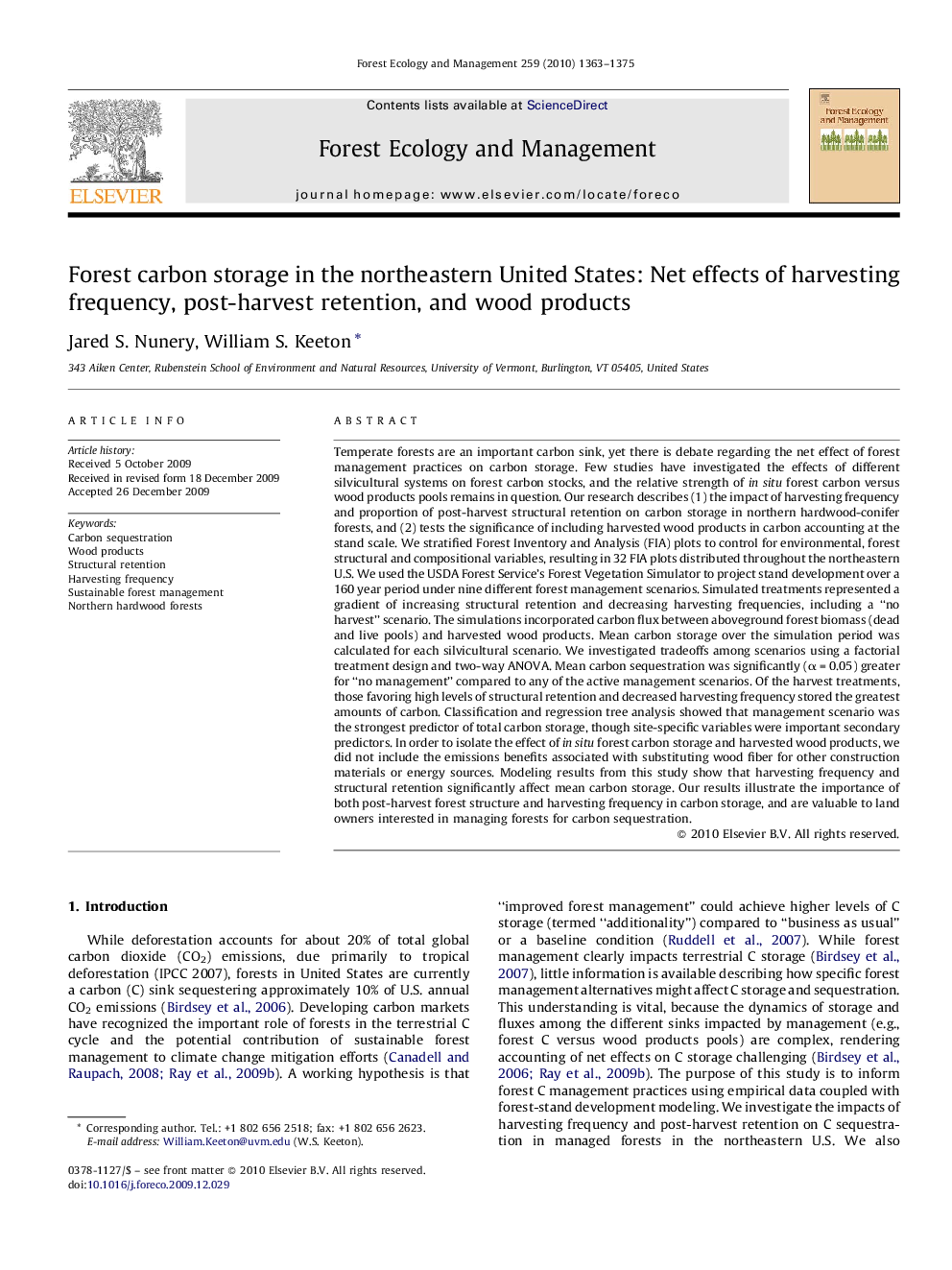| کد مقاله | کد نشریه | سال انتشار | مقاله انگلیسی | نسخه تمام متن |
|---|---|---|---|---|
| 88484 | 159306 | 2010 | 13 صفحه PDF | دانلود رایگان |

Temperate forests are an important carbon sink, yet there is debate regarding the net effect of forest management practices on carbon storage. Few studies have investigated the effects of different silvicultural systems on forest carbon stocks, and the relative strength of in situ forest carbon versus wood products pools remains in question. Our research describes (1) the impact of harvesting frequency and proportion of post-harvest structural retention on carbon storage in northern hardwood-conifer forests, and (2) tests the significance of including harvested wood products in carbon accounting at the stand scale. We stratified Forest Inventory and Analysis (FIA) plots to control for environmental, forest structural and compositional variables, resulting in 32 FIA plots distributed throughout the northeastern U.S. We used the USDA Forest Service's Forest Vegetation Simulator to project stand development over a 160 year period under nine different forest management scenarios. Simulated treatments represented a gradient of increasing structural retention and decreasing harvesting frequencies, including a “no harvest” scenario. The simulations incorporated carbon flux between aboveground forest biomass (dead and live pools) and harvested wood products. Mean carbon storage over the simulation period was calculated for each silvicultural scenario. We investigated tradeoffs among scenarios using a factorial treatment design and two-way ANOVA. Mean carbon sequestration was significantly (α = 0.05) greater for “no management” compared to any of the active management scenarios. Of the harvest treatments, those favoring high levels of structural retention and decreased harvesting frequency stored the greatest amounts of carbon. Classification and regression tree analysis showed that management scenario was the strongest predictor of total carbon storage, though site-specific variables were important secondary predictors. In order to isolate the effect of in situ forest carbon storage and harvested wood products, we did not include the emissions benefits associated with substituting wood fiber for other construction materials or energy sources. Modeling results from this study show that harvesting frequency and structural retention significantly affect mean carbon storage. Our results illustrate the importance of both post-harvest forest structure and harvesting frequency in carbon storage, and are valuable to land owners interested in managing forests for carbon sequestration.
Journal: Forest Ecology and Management - Volume 259, Issue 8, 31 March 2010, Pages 1363–1375